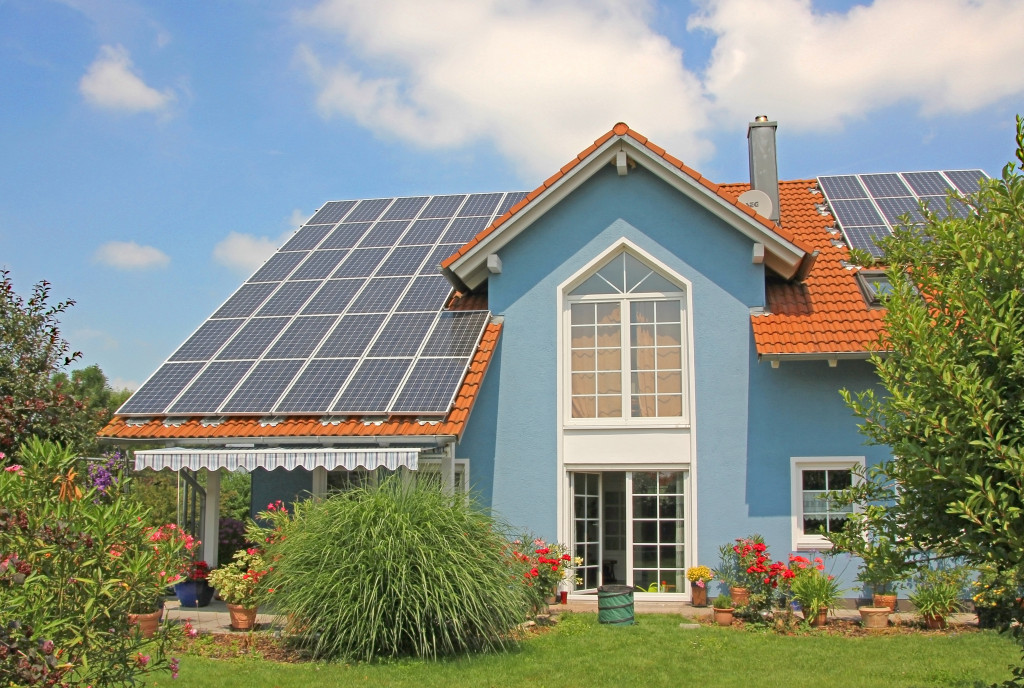- Switch to LED lighting – uses up to 90 percent less energy and has a variety of styles and colors.
- Upgrade to energy-efficient appliances – look for the ENERGY STAR label for the most efficient models.
- Renewable energy sources such as solar panels or wind turbines – can provide significant savings over time.
- Seal leaks and cracks – helps to keep heat inside during winter & outside during summer.
- Install programmable thermostats – set different temperatures for different times of the day to save money & energy.
As awareness of the importance of environmental protection grows, more and more people are looking for ways to make their homes more energy-efficient. Not only does energy efficiency help contribute to a more sustainable planet, but it can also save you money on bills in the long run.
This blog post will introduce you to sustainable practices you can implement in your home to maximize energy efficiency. These practices are simple and easy to incorporate into your daily routine.

Switch to LED Lighting
Lighting accounts for a significant portion of home electricity usage. But a simple switch to LED lighting can significantly affect energy efficiency. LED bulbs use up to 90 percent less energy and last significantly longer than traditional incandescent bulbs. Although the initial cost may be higher, the long-term savings are worth it.
Various Styles
Plus, LED lights come in various styles and colors, making finding the perfect fit for your home easy. With LED lighting, you can do your part to reduce energy consumption and keep the environment green. Plus, you’ll save money on your utility bill in the long run! So make the switch today and start reaping the benefits.
Upgrade to Energy-Efficient Appliances
Appliances such as washing machines, refrigerators, and ovens are major energy consumers in most homes. Older models may not be as efficient as new ones, so upgrading to energy-efficient appliances can save you significant money on your bills.
Energy Star
Look for ENERGY STAR appliances. The label indicates that they meet energy-efficiency guidelines the Environmental Protection Agency set. Look for appliances with high energy-efficiency ratings, which will use less electricity and help you save money in the long run.
Green Energy Plan
Finally, consider going with a green energy plan from your local utility provider to maximize your savings. With all of these steps, upgrading to energy-efficient appliances can be an excellent way to reduce your energy costs and help the environment at the same time.
Use Renewable Energy
Renewable energy sources such as solar panels or wind turbines can provide power for your home while reducing reliance on non-renewable energy sources. While the initial investment may be high, these systems can significantly save energy bills over time. You may even be eligible for tax incentives or rebates for installing renewable energy systems in your home.
Solar Energy
You can install reliable solar panels to reduce your carbon footprint. Solar energy is renewable and easy to access in most climates. You can save money on your monthly energy bills by harnessing the sun’s rays, and you may even be eligible for government tax credits or other financial incentives. Plus, if your solar panels produce more electricity than you need, you may be able to sell the excess power back to your local utility company.
Wind Power
Harnessing wind power can be a great way to reduce carbon emissions from energy production. Installing small wind turbines in your home or business can provide clean, renewable electricity. Some states and communities may even offer financial incentives for installing wind turbines on your property.
Seal Leaks and Cracks
Leaky windows, doors, and cracks can lead to significant energy losses in your home. By sealing these leaks and cracks, you can prevent drafts and keep your home more comfortable. Options include adding weatherstripping, caulking around windows and doors, or expanding foam insulation to seal gaps around pipes or other areas.
Heat and Cold
These simple fixes can help keep the heat inside during cold winter months and outside during hot summer months. Additionally, sealing leaks and cracks can help reduce the incidence of pests entering your home. Check for air leakage with a simple incense stick test: if smoke from the incense wavers or moves when held near a potential leak, you have an air leak that needs to be sealed.

Install Programmable Thermostats
You can set different temperatures using a programmable thermostat, which can help you save money and energy. You can program your thermostat to lower the temperature when you’re away from home or sleeping. This simple change can add to significant savings on your energy bills over time.
Accurate Temperature
When installing a programmable thermostat, there are several tips to remember. Ensure the thermostat is installed in an area of your home that accurately reflects the temperature of the rest of your living space. This can help ensure that the thermostat is reading correctly and adjusting the temperature accordingly.
As you can see, many ways to maximize energy efficiency in your home exist. These sustainable practices can save you money while helping to protect the environment. By implementing just a few of these practices, you can significantly impact your energy usage and take a step towards a greener future.
